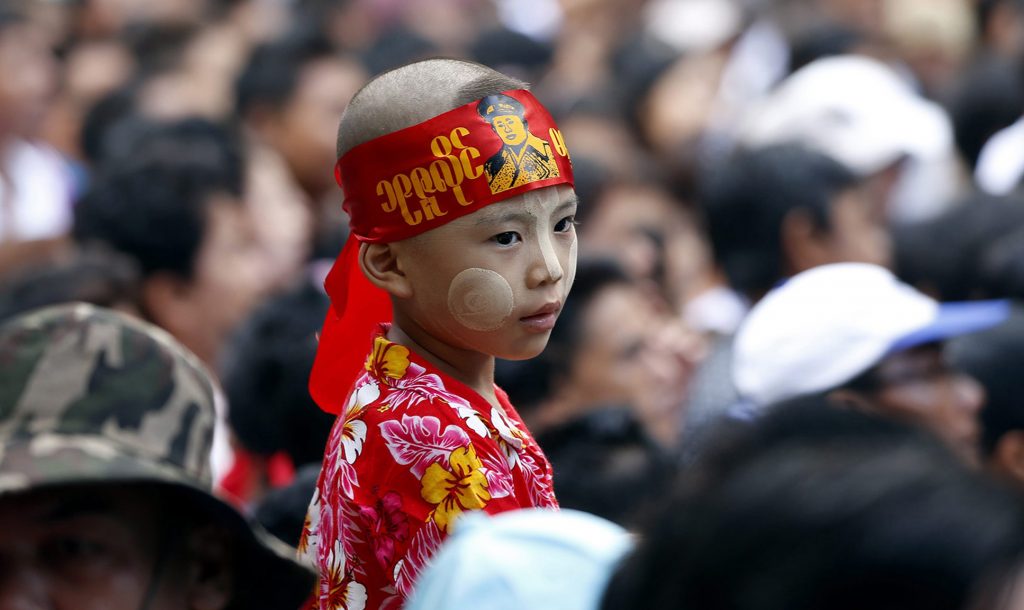This article was published in The Myanmar Times on Monday, 25 July 2016.
For the first time, it was held under a National League for Democracy-backed government. After several decades of absence, it was also the first time the commander-in-chief attended.
And, for the first time since 1988, this Martyrs’ Day people heard the sound of sirens and stood still at 10:37am, when the martyrs were assassinated in 1947. For two minutes, people of all faiths, races and ideologies united under one siren call.
But most importantly, this year’s Martyrs’ Day was a wake-up call for national reconciliation in Myanmar.
Martyrs’ Day is not just about remembering Bogyoke Aung San and the eight other fallen independence heroes. It has always been an important act of political symbolism. Paying respect and laying wreaths for those killed that day is a core tradition in Myanmar. So layered in symbolism is it, that it was the target of a terrorist attack in 1983 that killed, among others, four South Korean senior cabinet ministers.
During military rule, Martyrs’ Day events were part of a complex deciphering exercise for foreign diplomats and experts watching the roller-coaster relationship between Daw Aung San Suu Kyi – the daughter of Bogyoke Aung San – and the junta. It was the only time when people could see Daw Aung San Suu Kyi in public during her house arrest. People paid close attention to her every single move and used the event to speculate on her relationship with the generals. Her absence usually signalled problems.
Martyrs’ Day was also a day for political opposition. Daw Aung San Suu Kyi was arrested a day after the event in 1989 when students confronted the military. For many of Myanmar’s people, observing Martyrs’ Day meant exercising their political rights. By paying their respects at the mausoleum in Yangon commemorating the dead and other associated events, it was an opportunity for political activists to express their resistance to military rule.
Unsurprisingly, the military government tried to diminish the ceremony. Traditionally, it was state-led and attended by a cabinet minister, but later it was downgraded to the regional level and usually led by the mayor of Yangon. It also lost its status as a front-page story in state-owned newspapers. The sirens were also silenced.
However, during President U Thein Sein’s administration things began to change.
In 2011, Martyrs’ Day was still attended by the Yangon mayor on behalf of the government. In 2012, it was upgraded to a national ceremony, and it was Vice President Sai Mauk Kham who presided over the ceremony. In 2013, he was accompanied by two parliamentary deputy speakers.
In 2014, two parliamentary Speakers and the chief justice also joined the event. For the first time, the president attended a Buddhist religious memorial service in Nay Pyi Taw for Bogyoke Aung San and his fellow martyrs.
For the government, such moves meant more political openness and marked their commitment to change. However, there was neither the sound of sirens nor the presence of the commander-in-chief.
This year under the new NLD-led administration, Martyrs’ Day received more attention than ever before.
The mausoleum for the fallen had a facelift after years of neglect. It was recently renovated, and so too was the old Secretariat’s meeting room where Bogyoke Aung San and his ministers held their last conference before being murdered. His residence, which is now a museum, was also redecorated. Elsewhere in Myanmar, people were busy cleaning Bogyoke Aung San statues and making statues of other martyrs.
On the morning of July 19, 2016, people witnessed State Counsellor Daw Aung San Suu Kyi and Commander-in-Chief Senior General Min Aung Hlaing laying wreaths at the mausoleum. People were mesmerised when they saw them together again at a Buddhist memorial service held at Daw Aung San Suu Kyi’s residence. And the sirens, so long silent, sounded once more.
There was no need to decipher what this all meant. For once, Myanmar was united.
A new culture has now emerged where pedestrians and commuters stop what they are doing and observe Martyrs’ Day. In future years, when Myanmar pays respect to these nine martyrs, it should remember that they were of different ideologies, careers, faiths and races, but united and sacrificed their lives for one cause – the independence of Myanmar.
Today, the sound of the siren is a wake-up call for national reconciliation for all people of Myanmar, regardless of who they are and what they believe.
Chit Win is a PhD candidate in the Coral Bell School of Asia Pacific Affairs at the Australian National University and member of the ANU Myanmar Research Centre.
This article is supplied in partnership with New Mandala.
 Facebook
Facebook  Twitter
Twitter  Soundcloud
Soundcloud  Youtube
Youtube  Rss
Rss 